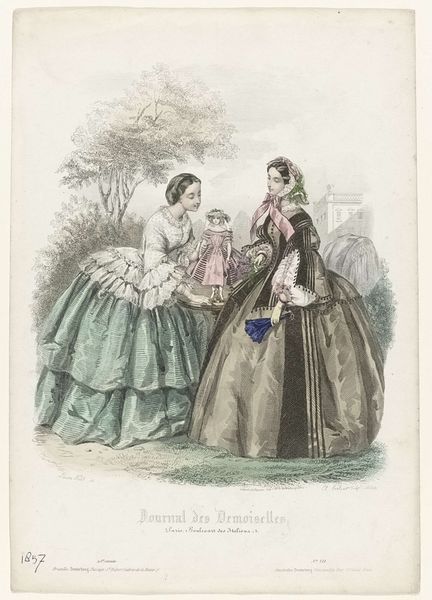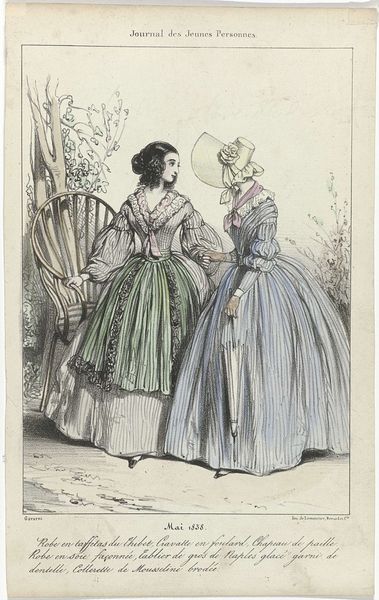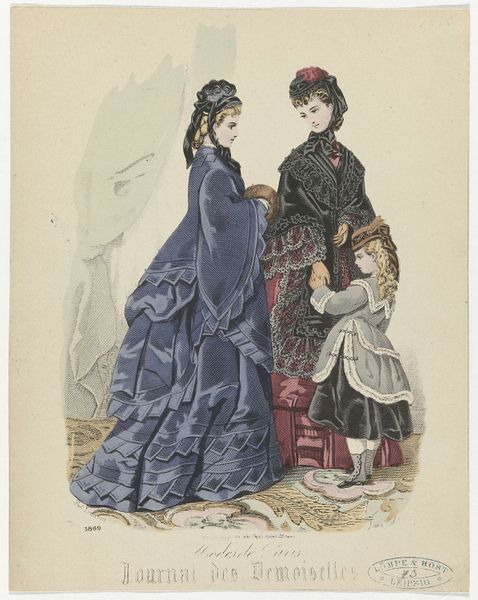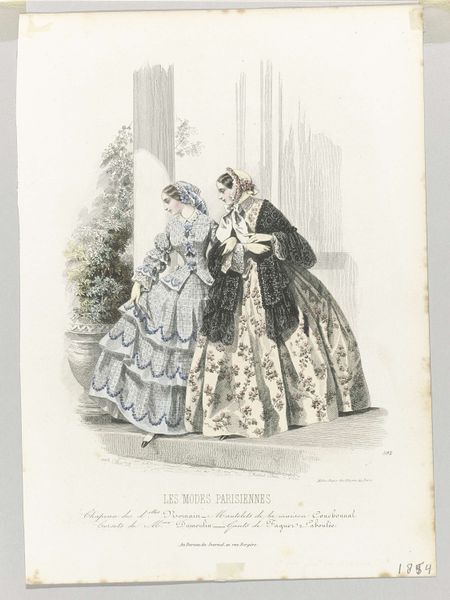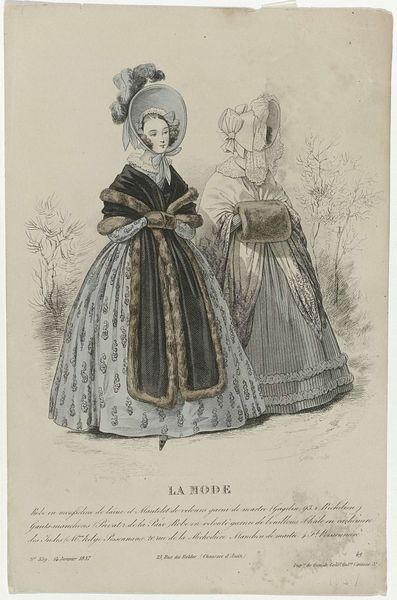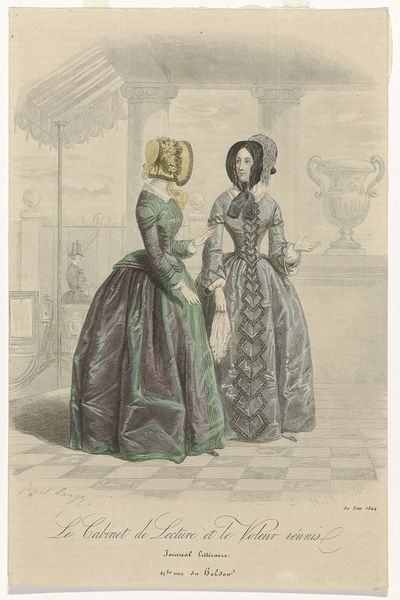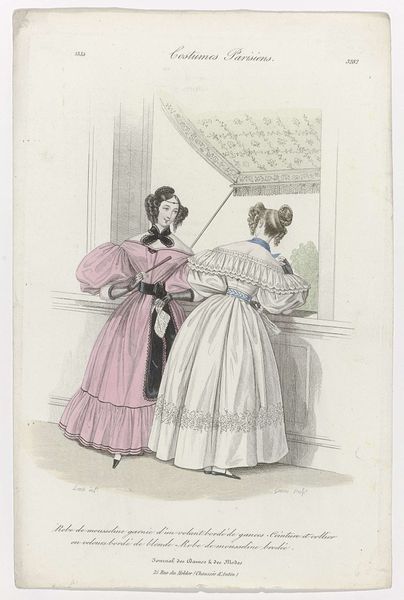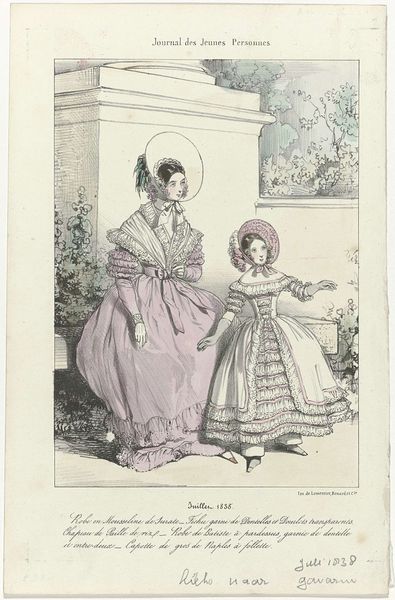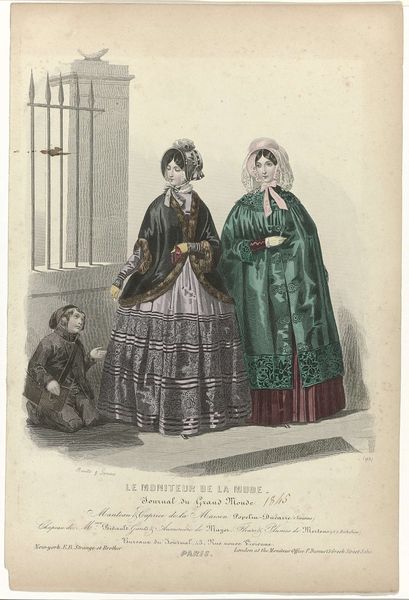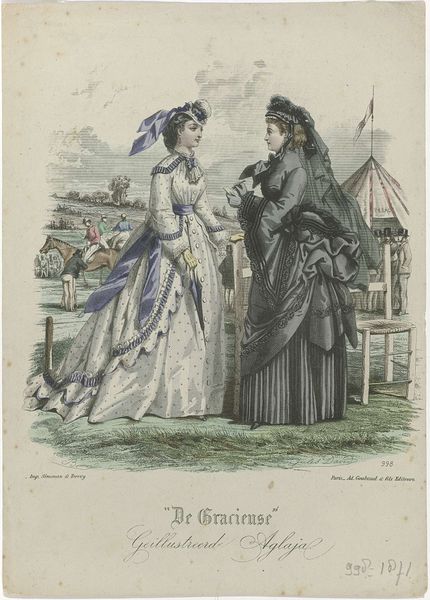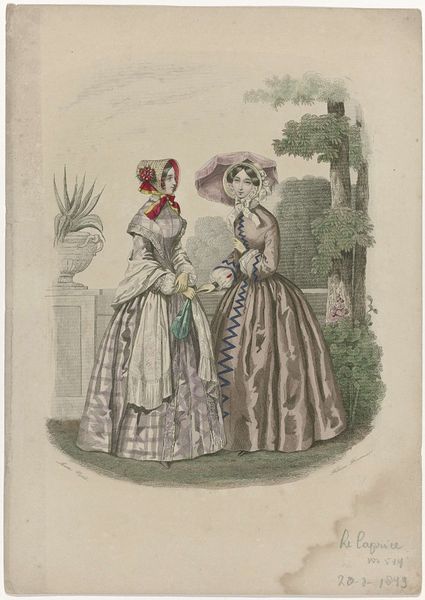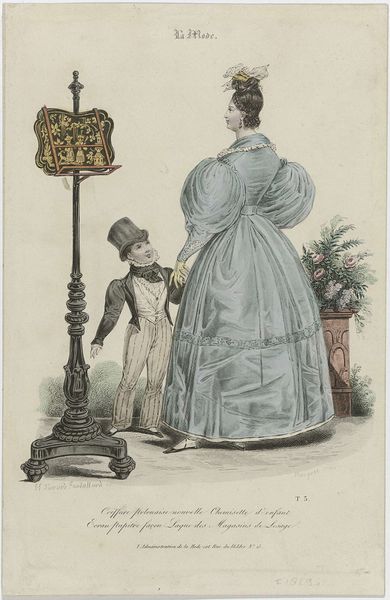
#
portrait
# print
#
figuration
#
romanticism
#
genre-painting
#
dress
Dimensions: height 254 mm, width 157 mm
Copyright: Rijks Museum: Open Domain
Curator: This is an engraving called "Le Bon Ton, 8 juillet 1844" by Eugène Mondain, dating from 1844. It presents two women in elaborate dresses of the period. What’s your initial response? Editor: Austere elegance, but with a slight air of melancholy, almost… suppressed yearning. The monochromatic palette emphasizes the textures, drawing your eye to the minute details of their gowns. They look like fashionable, affluent widows on permanent display, almost imprisoned. Curator: An intriguing take. Considering Mondain's work frequently appeared in fashion journals like Le Bon Ton, its material function was dissemination and the consumption of fashion amongst a burgeoning middle class. It reflects the social construction of elegance in 19th century France. How does knowing it was published as essentially an advertisement for dresses impact you? Editor: It makes the whole scene sadder somehow, commodifying female elegance, and distilling lived experiences into fleeting fashion trends. I start looking for imperfections, a tear in the lace perhaps. Some hint of the human within that perfectly constructed image. The meticulousness becomes almost unbearable. Curator: Indeed. The romanticism evident here also participates in constructing aspirational ideals of femininity tied to dress. Each element -- from the bonnets to the sleeves, and layers of lace and fabric, tells a complex story about labour and accessibility of materials. Notice also the backdrop – a carefully constructed garden and a very large building that seem to indicate luxury. Editor: That backdrop certainly reinforces the performance aspect. They’re perpetually on show, figurines against an aristocratic facade. I find myself wondering, what were they really thinking and feeling on the 8th of July, 1844? Curator: It pushes the mind into historical reconstruction through the lens of sartorial detail. So, looking at it as an item documenting labor and consumerism, how do you now see it? Editor: Less like a snapshot and more like a carefully produced document. I can imagine the engraver meticulously tracing the design, the printmaker producing copies... Layers upon layers of mediated experience. Curator: Precisely. That interplay between art, production and lived experience is where much of its richness lies. Editor: I leave feeling less wistful about an imagined past, and more grounded in the historical realities embedded within the print.
Comments
No comments
Be the first to comment and join the conversation on the ultimate creative platform.
